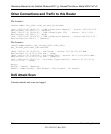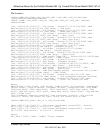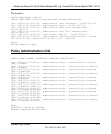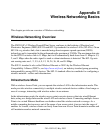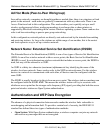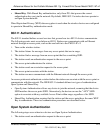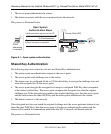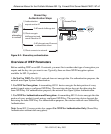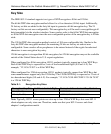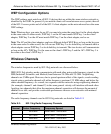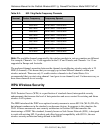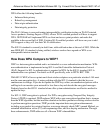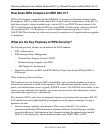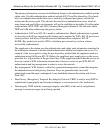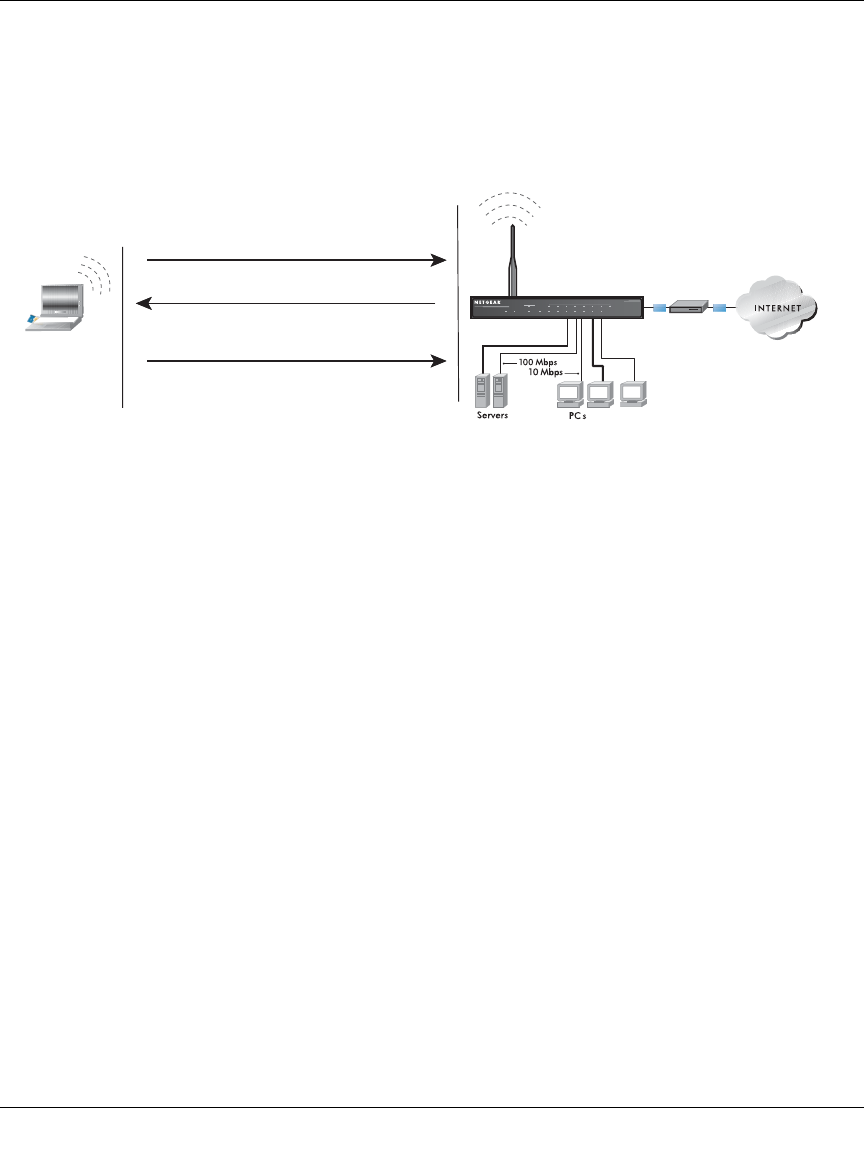
Reference Manual for the ProSafe Wireless 802.11g Firewall/Print Server Model FWG114P v2
E-4 Wireless Networking Basics
201-10301-02, May 2005
2.
The access point authenticates the station.
3. The station associates with the access point and joins the network.
This process is illustrated below.
Figure E-1: Open system authentication
Shared Key Authentication
The following steps occur when two devices use Shared Key Authentication:
1. The station sends an authentication request to the access point.
2. The access point sends challenge text to the station.
3. The station uses its configured 64-bit or 128-bit default key to encrypt the challenge text, and
sends the encrypted text to the access point.
4. The access point decrypts the encrypted text using its configured WEP Key that corresponds
to the station’s default key. The access point compares the decrypted text with the original
challenge text. If the decrypted text matches the original challenge text, then the access point
and the station share the same WEP Key and the access point authenticates the station.
5. The station connects to the network.
If the decrypted text does not match the original challenge text (the access point and station do not
share the same WEP Key), then the access point will refuse to authenticate the station and the
station will be unable to communicate with either the 802.11 network or Ethernet network.
This process is illustrated below.
).4%2.%4 ,/#!,
$&7
/1.
/1.$&7
?MjÊ.
+Á.?wjË8ÁjjÄÄË7+!Ë.jWÖÁÍßËÁjÝ?
-/$%,
7 Ϥo
072 4%34
7,!.
(QDEOH
$FFHVV3RLQW$3
!UTHENTICATIONREQUESTSENTTO!0
!0AUTHENTICATES
#LIENTCONNECTSTONETWORK
2SHQ6\VWHP
$XWKHQWLFDWLRQ6WHSV
#ABLEOR
$,3MODEM
&OLHQW
DWWHPSWLQJ
WRFRQQHFW



